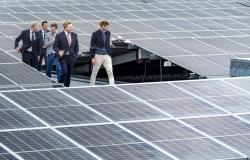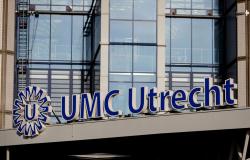
On the one hand, the EU wants to become climate neutral as quickly as possible and on the other hand, mountains of subsidies are going to the agricultural sector, which emits a huge amount of CO2, pollutes the soil and is bad for animals.
To be precise, the EU spends 82 percent of all agricultural subsidies on polluting agriculture, such as livestock farming and animal products. The country bloc is thus undermining its climate goals, researchers wrote in a study on Monday Nature popped up.
A surprise
That is something to seriously consider. Global food production accounts for about a third of total greenhouse gas emissions. The EU’s current agricultural policy is therefore currently an “economic disincentive for transitions” to more sustainable practices, the scientists say. “We discovered that European agricultural policy disproportionately supports animal products compared to plant-based alternatives,” says lead researcher Anniek Kortleve from Leiden University. “That came as a bit of a surprise. It was a little bit more than other studies previously reported and that is because we correctly included animal feed subsidies,” she explains.
Animal feed
Direct subsidies to livestock farmers accounted for half of agricultural subsidies, for which 57 billion euros were budgeted in 2013. All support for farmers with high emissions. The rest of the money largely went to the production of animal feed.
For beef, the subsidy increased from 0.71 cents per kilo to 1.42 euros if animal feed was included. Not much has changed in the distribution of subsidies between 2013 and 2020, the researchers write.
That such a mountain of money goes to such a polluting industry is remarkable when you know that the European Union wants to be climate neutral by 2050. By 2030, CO2 emissions must be 55 percent lower than in 1990. A daunting task that is difficult to accomplish without farmers causing so many emissions.
Climate goals unattainable
The researchers therefore say that the subsidies significantly hinder the EU’s climate goals. “Globally, emissions from the food system are enough to push us over the 1.5 degree warming mark,” it said. That is the agreed goal from the 2015 Paris climate agreement: if warming remains below 1.5 degrees, the consequences for the earth are still somewhat manageable. “It is very difficult to achieve those goals if you design the economy in such a way that you stimulate the most harmful products,” says co-researcher Paul Behrens from Leiden.
The knife also cuts on both sides. Not only do farmers emit a lot of greenhouse gases, the land you use for livestock and their feed can no longer be used for planting forests or other things that ensure more plants and animals that can absorb carbon. “You cannot use the land for so many different applications at the same time,” says Behrens.
Crop failures
In addition, farmers themselves are also greatly affected by climate change. Many harvests are lost due to floods, extreme drought and forest fires. Investments in methods to adapt and distribute land can provide protection in the long term, the scientist says.
The subsidies would therefore have to be distributed differently. In any case, the subsidized products are not even only used for consumption within the EU. At least 12 percent of it, mainly more expensive products such as cheese, pork and wine, is exported to countries such as China, Russia and the US.
Different interpretation
Behrens does recognize the importance of agricultural subsidies, but believes that the system “must be redesigned to promote environmental benefits”. Subsidies must also be adjusted to the increasingly difficult circumstances for farmers, resulting from global warming.
In short, it would be better for both farmers and EU citizens and certainly the climate if the European Union’s agricultural subsidies were distributed differently, with a greater focus on plant-based alternatives.
Tags: percent European agricultural subsidies polluting livestock farming climate goals threat
-




